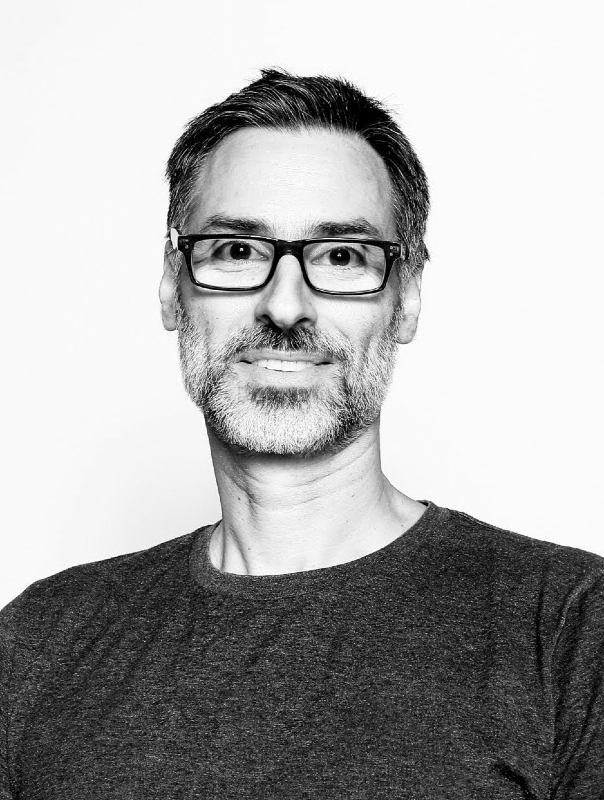
USA
Thank you for reaching out to Sigma Software!
Please fill the form below. Our team will contact you shortly.
Sigma Software has offices in multiple locations in Europe, Northern America, Asia, and Latin America.

USA

Sweden

Germany

Canada

Israel

Singapore

UAE

Australia

Austria

Ukraine

Poland

Argentina

Brazil

Bulgaria

Colombia

Czech Republic

Hungary

Mexico

Portugal

Romania

Uzbekistan
Sigma Software has recently delivered a solution for Venn City, a pioneering urban development startup that elevates city life and transforms neighbourhoods into thriving communities. They have built the first scalable and replicable model of urban neighbourhood revitalization, bridging real estate and smart technology to encourage human-to-human connections and promote community engagement.
Together with the Sigma Software team VennCity has developed an open-source extension to a Facebook Translation Project. We met Benny Keinan, the VP of R&D at Venn and Ex-VP of Engineering Video at Oath (Verizon Media) to talk about the tech industry and to look behind the project`s curtain.
Benny, a few words about yourself. How did your career path in tech get started?
Benny: I joined a special program of the IDF army in which you go to the university for the BSc and after that join one of the tech units of the army. In my case it was the Airforce where I spent an amazing eight years on all kinds of interesting projects. After being released from the army, I began my startup journey spending six years on different new businesses, and then jumped back and forth between startups (my real passion) and corporates (a different kind of passion…).
During my career I had all kinds of positions: real time developer, DevOps, leading ops teams, leading dev teams all the way to being VP of R&D at multiple companies.
What was your takeaway after working at Oath (Verizon Media)? Your cooperation with Sigma Software began at that time, so could you tell us your impressions of cooperating with our team and what was the solution that was developed?
Benny: At Oath I managed a very distributed team, almost 200 people across 3 continents, 7 countries, and 11 offices. So that was a great opportunity to sharpen my skills on how to build a unified cross-geo and cross-cultural organization that really excels in what it is doing and having fun while doing it.
One of the key takeaways from this experience of working on a team that is 50/50 in-house developers and external developers, is that you need to remove the terminology… There are no internal or external developers. All developers are part of the same team and should feel like that. Not only in theory or when speaking, but in real day-to-day activities and I think we managed to achieve that. This amazing team built a unified video platform that consolidated three different platforms from three different startups into a super platform in a very impressive way both from technical and business perspectives.
As a VP of R&D of VennCity, what are the main challenges you’re struggling with in your daily routine?

Benny: Today we have a very challenging environment, both locally and globally. COVID-19 has changed the way we work, it changed the way people are consuming services, it impacted their income and has caused them to reconsider their way of living. We are currently looking at new opportunities in regards to living situations. So the current climate directly influences how many people are actually looking for a new home to live in versus people that are leaving their home and going back to their parents due to the cost of living.
On the dev/product side, we are optimizing to provide quick value to our members, re-validating our roadmap to focus on things we can help our members, both now and at some point in the future. This has created a much more dynamic environment in which we need to provide quick solutions that utilize the infrastructure we have built up through today while the entire team works remotely from home… Fun times 🙂
Why did you choose to collaborate with Sigma Software on your new projects? What would you recommend paying attention to when choosing an IT-service provider?
Benny: Sigma Software were able to provide us with an on-demand solution so that whenever we have a need for a new solution, we can get an answer for this within a few days without diverting our team from their current work, and still support our business needs. Sigma Software provides high-quality engineers that are available on a short notice. As our resources are very limited, we try to concentrate our development time on the most critical things we need. But there are many other things that are not critical or are not at the core of our business that we need to push forward.
When selecting a vendor you must see that the vendor is there for you. That the vendor can adjust and make itself available for you when and how you need help. You also need to be able to work with the vendor in a way that will be efficient and will not consume a lot of time from our side to manage the project etc., otherwise we might better off doing it ourselves.
Sigma Software has recently delivered a solution for Venn City, can I ask you to share some more details about it?
Benny: We worked with Sigma Software on two projects that are not part of the core product, but are very critical to our solution. Both solutions are planned to be released as open source projects so the wider community can enjoy them.
The first project was focused on providing a management UI on top of a FBT (Facebook translation project https://github.com/facebook/fbt). This is a great framework to manage all the text in the system that needs to be translated. What we were missing was a UI that would allow our marketing and product teams to be able to change the text without going through the dev team, and this is what Sigma Software helped us build.
The second project is named Clou. This is a mono-repo for sequelize-based GraphQL openCRUD (https://github.com/opencrud/opencrud) data-access packages. Sigma Software helped us to close all the specifications and provide full openCRUD API, on top of sequelize and Postgres DB.
How exactly does this new solution correspond to what VennCity does? Translations vs. looking for real estate for renting. Who are the end-users and what problem does this solution try to solve?
Benny: Venn is operating in multiple countries/cities. So we need to make our solution available in different languages. Our website needs to be presented to our users, what we call our members, in their local language. The translation solution helps us to manage the language outside of the dev resources, and utilize our community managers to pick the best language to use in an easy way via the management UI.
How does it actually work? How does it differ from other similar solutions?
Benny: This app allows for the editing and management of translations in an elegant and handy admin console, which makes site localization for many languages fast and painless. We didn’t find any open solution to run on top of FBT resources, so we decided to create our own.
Why did you chose the Facebook Translation Project as a basement?
Benny: It’s a powerful library that provides support for both multiple languages as well as other language aspects in a very easy and robust way.
This project is open-source, which means everyone will have the rights to use, study, change, and distribute it. Why did you make a decision to use this type of solution?
Benny: Venn believe in doing good things, this is a part of who we are. The development of Venn is no different 🙂 This is not a secret ingredient of our solutions and there is no reason that others will not benefit from that as well. Anything we do that we can share, we share.
What are your plans regarding this solution or future ones?
Benny: We are working on adding a few more capabilities to make it easier for others to use (like authentication and permissions). We just started to use it in our own solution, so I think new requirements will arrive soon 🙂

Sigma Software Group provides IT services to enterprises, software product houses, and startups. Working since 2002, we have build deep domain knowledge in AdTech, automotive, aviation, gaming industry, telecom, e-learning, FinTech, PropTech. We constantly work to enrich our expertise with machine learning, cybersecurity, AR/VR, IoT, and other technologies. Here we share insights into tech news, software engineering tips, business methods, and company life.
Linkedin profile

Sigma Software has become a partner of Gaia-X European Association for Data and Cloud AISBL. In this role, we will help ensure secure, sovereign data exchange a...

2025 at a glance: a year defined by our company’s further global expansion, meaningful partnerships in the area of AI and cloud, and visible impact across educa...

Sigma Software is proud to announce that we have become part of NVIDIA Partner Network in NVIDIA AI competence, to bring advanced AI-powered solutions to our cl...